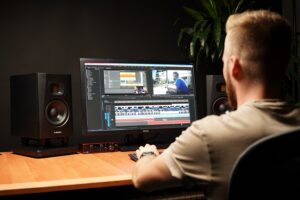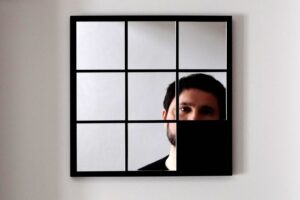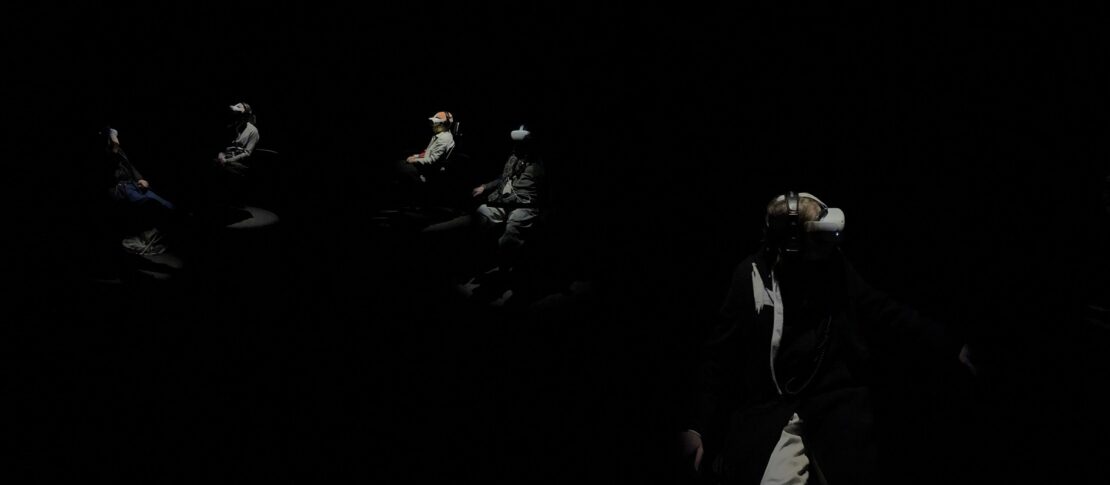
Designing Immersive Sound Environments
Composer and sound designer Manolis Manousakis designed the immersive sound environment for the VR360 short film “On The Way To Colonus”. The film, created by Loukia Alavanou represents Greece in the Greek Pavilion at the Venice Biennale 2022. Four large, enclosed domes create an immersive soundscape for visitors to walk through and are equipped with a total of 7 T8Vs, 6 A5Xs and 5 T10S subwoofers. Within the domes sit several chairs and VR headsets for visitors to experience the short film in virtual reality.
Prior to the Venice Biennale project, Manolis has worked on audio installations, compositions for small ensembles, solos, electro-acoustic compositions, video art and multimedia shows. He has composed the original music for theatre shows, documentaries, TV series, films and theatre dance shows. As a sound designer he has worked in feature film projects, documentaries, advertising, theatre and short films and has also recorded extensively the landscape of Greece.
We speak with Manolis about his journey into immersive soundscape design and explore what it took to create the sound experience at the Venice Biennale.
Hi Manolis, thanks for taking the time to talk to us. Please tell us, how did you first get into sound design and composition for visual projects such as film and tv? What motivates you?
I have always been interested in creating sound and music for film. I began music lessons and theory at an early age and made my first attempt at composing for a high school student film “Angel” made by my classmate and now director / animator Spyros Tsiounis. I was involved in TV and Theatre production as an assistant director and production assistant before moving to the United States in 1994 to study composition. This was my entry point into the magic world of moving image.
What for you, was the most important or memorable project(s) you have worked on? Why?
Each project I’ve worked on required a unique approach. The most memorable projects however, are the ones that involved the local community. My first “immersive project” was a phone application. “Soundscapes Landscapes 2013 – present“ offered a parallel route through the city via your smart phone or tablet device. I spent a year and a half with a group of artists composing, recording and interviewing the local community in various neighborhoods of Athens, transforming a simple city walk into an interactive artistic experience.
Similarly, I designed an XR installation for the first extended reality project in Greece. The neighborhood served as the canvas for the experience of the audio-visual walk. It simulated this experience by means of VR stations, video projections, texts, sounds and compositions. The visitors engaged with a staged virtual reality environment which guided them through the space, bringing Athens and the experience of its streets and crossroads to life. The audio installation on this project consisted of a 64-speaker system.
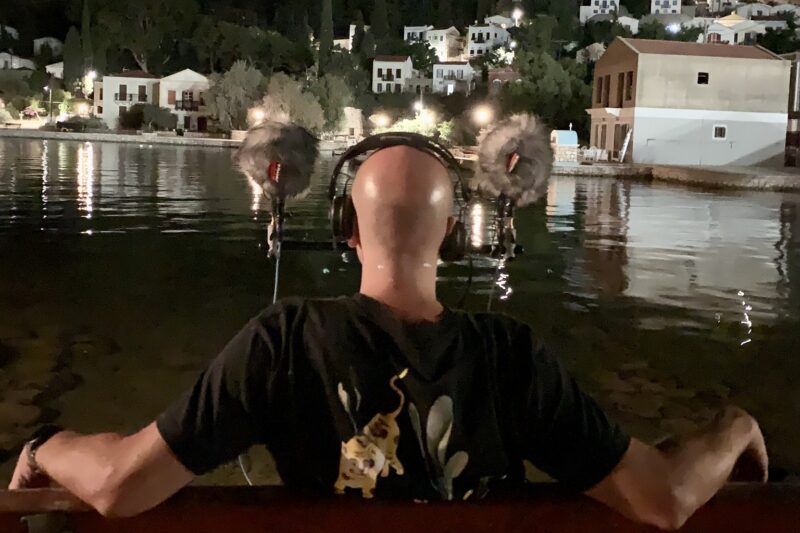
What motivated you to work on the Greek Pavilion Film Project “On The Way To Colonus” at the Venice Biennale?
The “magical world “of the Roma community in “Nea Zoi”. In the 1980s, the people here formed a community in the outskirts of Athens, hidden in Aspropyrgos at the foothill of Fillis garbage dumpb. Their openness and drive to help us in our project gave me the motivation to work on the project. Without them it would have never happened.
How would you describe the sound of Greece? What makes it unique?
As with any place I’ve visited and recorded, it’s the people that make the difference. Their activities, nature and festivities. The way they behave when they talk and pronounce words. Their culture. All of this contributes to their uniqueness. Since 2007, I have been recording the Greek Urban and Rural soundscape extensively. The diversity between the islands and mainland, the city of Athens and the rural landscape of the Peloponnese. The cicadas in the summer create a wall of noise in different frequencies, from early morning to late evening. Late at night, sounds from crickets and night gales take over. This all comes together to create a memorable moment for all Greeks and visitors.
What is your process for designing an immersive sound environment, such as the one for the short film at the Greek Pavilion?
When designing for the Greek pavilion, my aim was for the visitor to spend some time wandering through the domes. To begin with, I created a sonic dramaturgy, something like an audio script. I wrote that on paper and then listed the original sound recordings I had already made for the project. From there, I composed all sounds and sound elements in stereo. Then, I made a script for the user experience, taking the design of the space and creating imaginary paths. For example, when entering the main dDome, what is the first sound you listen to? Scripting helps me design the best speaker configuration to lead the visitors through an immersive auditory experience.
Which part of the process do you enjoy the most and can you also say why?
I love recording soundscapes. Everything starts from there. A good recording can justify a good sound piece combining recordings and sound bits. I’m really into the process of researching and scripting each project I am involved in.
What were the most challenging aspects in designing the immersive sound environment for the Greek Pavillion? How close have you come to your vision for this project?
It was very close to my original idea. Although we hadn’t tested the final speaker configuration prior to our arrival, the installation was carefully designed. Having worked with ADAM Audio speakers in past installations and in the studio, I felt sure that the sound outcome would be as imagined.
We made a small dome configuration at the studio and premixed a version with two 4– channel speaker set ups. Once in Venice, we designed a pseudo-ambisonics system and expanded this with speakers in the rest of the Domes creating a sound walk or path. We remixed and made final tunings in situ. The most challenging aspect was to create an audio experience which resembled the Roma world and at the same time served the dystopic elements of the installation. My aim was for the audience to move around the installation and explore the different sonic qualities, while creating different paths within a confined space.
What feedback have you received about the installation, its concept and sound?
Overall, the comments about the sound installation made us feel confident that we had designed a creative experience with a unique approach to the subject. It added to the dramaturgy of the work and created an immersive experience for the audience.
What tips do you have for others who want to get into sound design and composition for visual projects?
Sound design or sound composition involves a great level of research and depth of involvement in audio production. A sound designer should study music, sound recording and film. For audio post-production work, it’s really important to gain experience as a location sound recordist. It’s a key production element in moving-image projects and something that can’t be taught in class. Studio recording techniques, mixing, and mastering techniques should be learned to a high level. However, it’s most important to remain constantly creative and to record and compose daily. I myself am trying to record or make a small sound composition every day, continuously adding sounds that can be used in future projects to my personal sound library.
It seems like the pro audio world is moving on from stereo and towards exploring multi-channel applications, such as Dolby Atmos. What is your take on this trend?
These days we live in a parallel sound world. We create productions for multiple channel systems, like sound installations or cinemas (like Dolby Atmos) and immersive environments where the audience can enjoy the most detailed audio experience. However, that same audio product is usually heard through headphones, or in the best-case scenario soundbars in home entertainment set–ups. I don’t expect the audience to have expensive audio gear in their homes, but I do hope that audio projects are offered on multiple platforms for a greater listening experience. Supporting the audiophile audience, while introducing new audiences to listening practices that extend beyond the headphone experience.
I think immersive sound design could become the new industry standard and lead to new technologies and listening behaviors. Binaural audio mixes now offered by some artists is a start, and could extend to even more immersive platforms and home speaker configurations. Lets hope for that.
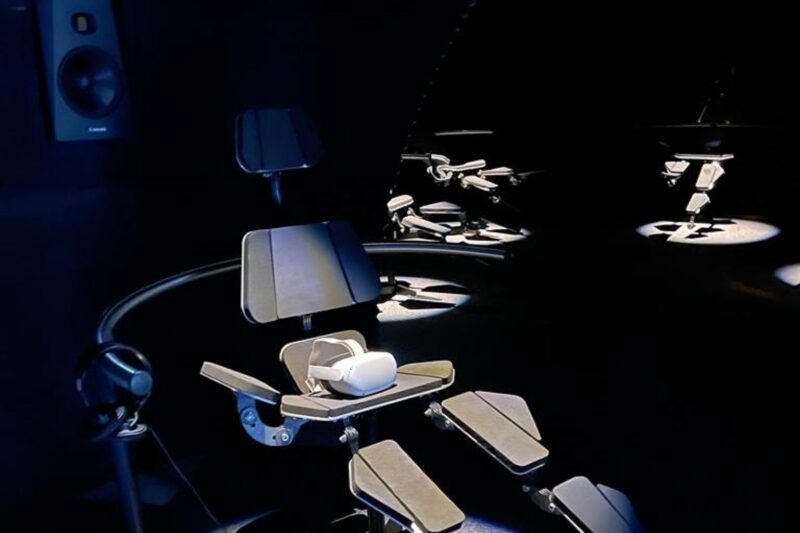
Last but not least, let’s talk some gear. What set up do you have in your studios?
My standard 5.1 studio set up is made with two pairs of A77Xs (FL, FR, SL, SL) and an A7X as the center monitor. I drive my main ADAM A77X stereo pair with a Sonosax DD2 ADA Converter.
I also have a pair of A5Xs to go back and forth when mixing Proze. This is combined with an audiophile mastering set up which has a pair of Ensemble Figura speakers powered from a Lavardin Model C42 Reference Line Preamplifier and a Model IT Integrated Amplifier. I’m really happy to say that going back and forth between my ADAM A77Xs to my mastering set up keeps my work intact and makes my deliveries more accurate.
What makes the perfect studio monitor for you? Which features and qualities are important for you when it comes to monitoring?
I don’t think I will be able to give up the ADAM Tweeter technology. The accuracy is something that I can’t find anywhere else. Working with dialogue and sound for film I need a clean, flat truth to presentation of sound in recordings.
Manolis, thank you so much for this interview and for sharing your insights! This has been most interesting and we hope that a lot of people enjoyed your installation at the Venice Biennale. We’re sure we’‘ll hear from you in the future!
